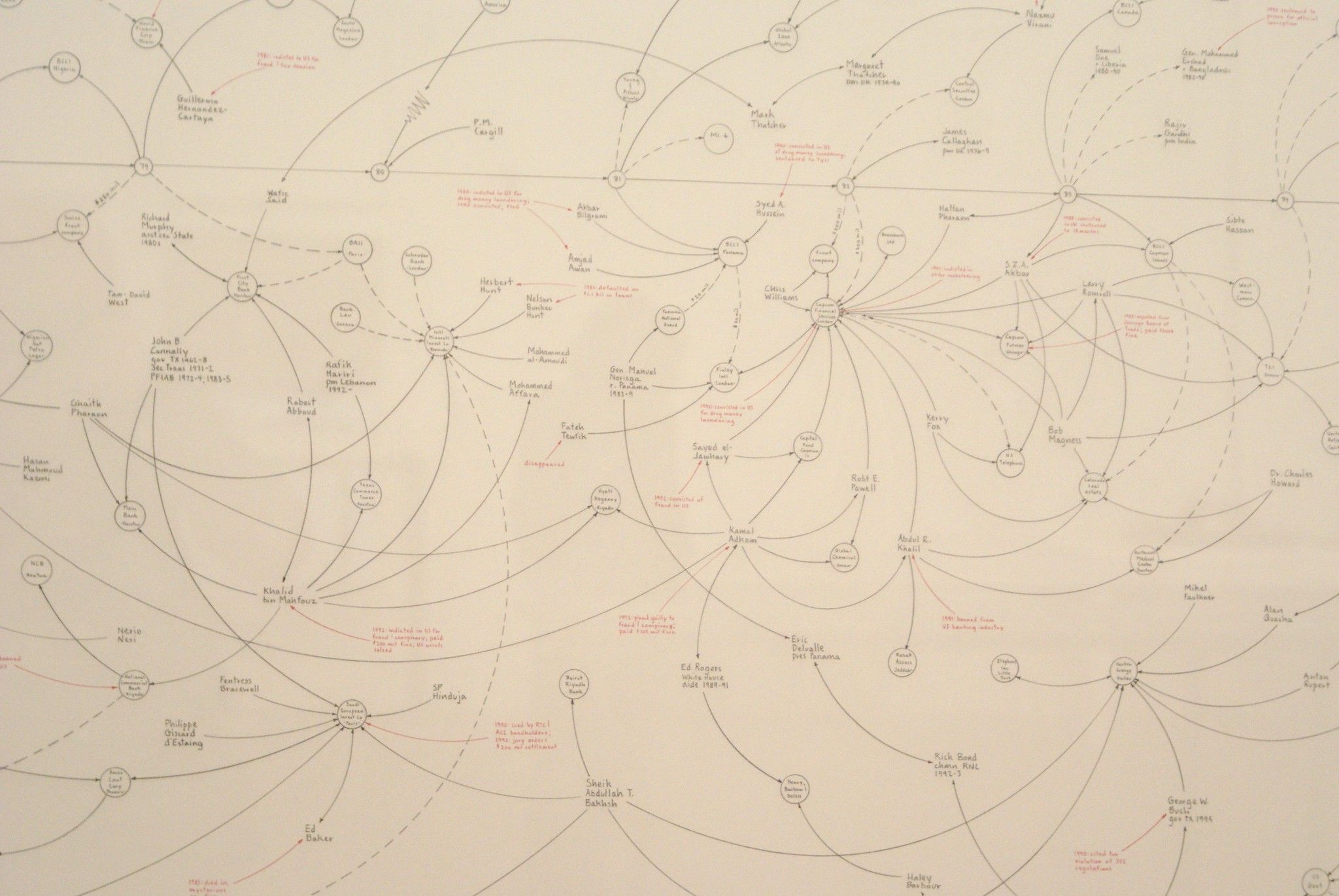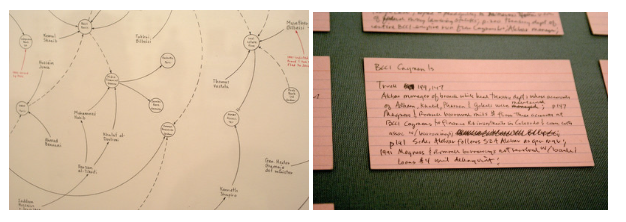
A fascinating biography details the life of an artist who drew true conspiracies.
By Soobin Kim
Over three decades ago, an international bank called BCCI was shut down by regulators. BCCI had been bankrolling the criminal activities of fraudsters and dictators, as well as CIA operations abroad.
The collapse of BCCI became the obsession of a struggling artist named Mark Lombardi who was moonlighting as a Texas politician’s sleuth at the time. He would go on to produce gigantic drawings that mapped the networks of money and power involved with the bank – using a technique called an interlock search that identified links between seemingly unrelated entities.

In 2000, his BCCI drawings were exhibited at MoMA PS1. Two weeks later, Lombardi was found hanging from a sprinkler pipe in his apartment. A cursory investigation declared his death a suicide. The next year, FBI agents visited the art museum that had purchased his drawings and asked to remove Lombardi’s work.
All this is detailed in a fascinating biography of Mark Lombardi called Interlock: Art, Conspiracy, and the Shadow Worlds of Mark Lombardi by journalist, playwright and third-generation Angeleño Patricia Goldstone.
Here’s an edited version of our conversation about BCCI, Lombardi’s rise in the art world and the mysterious circumstances surrounding his death.
In a nutshell, what was BCCI?
Bank of Credit and Commerce International – known colloquially as the Bank of Crooks and Criminals International – was a huge bank that billed itself as the Bank of America for the Third World but was in fact the CIA’s first global money laundry. It was founded in 1972 with financial backing from Bank of America, and by the mid-1980s had offices in 78 countries serving nearly one million borrowers and depositors.
Behind its facade of legitimacy, BCCI handled money for customers including international gangsters, drug smugglers, arms dealers, tax cheats, and the intelligence services of the US, UK, UAE, Pakistan, and Saudi Arabia which used it to support the mujahideen in Afghanistan, finance Iran-Contra and launder money for dictators like Saddam Hussein and Manuel Noriega.